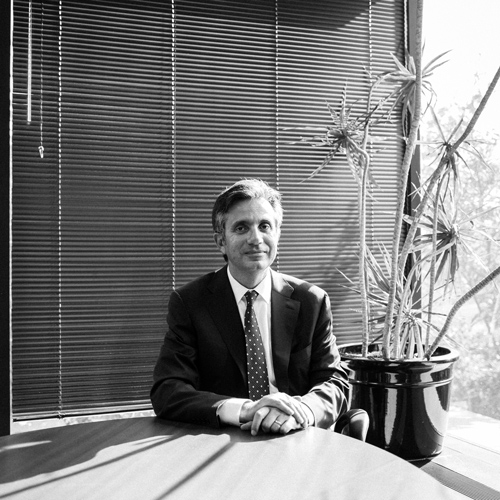As an advocate for safe and efficient public transportation, Michael Petrucci, vice president and general counsel of FirstGroup America, ensures that all law department meetings begin with a safety message.
His message varies on the dangers of texting and talking on a cell phone while driving, why hands-free driving still poses a risk, and to be careful as a pedestrian, making eye contact with the drivers before they pull out of side streets. These messages leave the boardroom and trickle through corporate from the operations managers to the general managers and the bus drivers.
“Safety is our core value,” Petrucci says. “We understand you must do it safely, and we live it both in the corporate offices as well as in the field.”
With its parent company established in the United Kingdom, FirstGroup America is a $5 billion North American company that has three units: First Student, the largest provider of school transportation; First Transit, one of the nation’s largest private sector providers for public transit management and contracting; and Greyhound, the sole national operator of scheduled intercity coach transit services in the United States and Canada. In the United States, the company has approximately 80,000 employees and 70,000 buses getting people to school, work, events, or to see loved ones, and back home again. The company’s mission is to “provide solutions for an increasingly congested world . . . keeping people moving and communities prospering.”
THE EXTRA MILE: Q&A WITH MICHAEL PETRUCCI
What’s the most underutilized form of public transportation available in the United States? How could it immediately help people if it was more widely utilized?
Presently, the city bus. If more people realized the advantages they could get from using the city bus to get to work or school, they would see the benefits. As a quick example, from where I live, it costs me approximately $9.00 to ride an Uber to downtown Cincinnati. Yet the same trip costs me only $1.75 on the city bus. That’s a savings of 80 percent.
What’s been the greatest advancement in public transportation in the twenty-first century?
Technology is very important for FirstGroup America. We have been a big driver in technology with initiatives such as Drive Cam and Child Checkmate. Our Child Checkmate initiative is a sensor alarm that engages when the driver has turned the engine off. It will also sound if the driver does not walk the length of the bus to check and make sure that no child is left behind before exiting.
Just for fun, what’s the funniest experience you’ve had on public transportation?
When I started my work life, I rode the bus every day for four straight years, and there wasn’t a day without something quirky happening, whether it was a disgruntled passenger or a passenger telling a joke. Riding a school or public bus is like being in a little community where people can meet, and because they’re not driving, it frees people up to be communicative. I’m sure a lot of people have met their spouse on a bus or became lifelong friends.
Petrucci recounts one specific experience in which he was able to marry this vision and core value together by working to improve travel for a student in a wheelchair. As the student grew, he required a bigger, heavier wheelchair that, from a safety perspective, posed a potential issue on the bus in which he traveled. Thanks to the company’s large fleet of buses, FirstGroup America quickly located a bus that accommodated the weight of the new wheelchair. To ensure that this fell in accord with the student’s individualized education plan and programs (IEP)—a school district-developed plan for those with disabilities—Petrucci worked with the student’s parents, the operations department, as well as the school district to make sure everything was in agreement.
Paratransit, which is a subsect of First Transit, is the second division of the company that serves the community to transport those who have a disability and need to get to a pharmacy, medical appointments, or dialysis.
“It’s a really important component of our society,” Petrucci says. “We make sure they have access to everything you and I have access to every single day. Those who have a disability can still live a very meaningful and fulfilling life, and public transportation, whether it be a school bus or a city bus, allows them to do that.”
Ultimately, he wishes that a larger portion of society would take advantage of public transit. Riding the city bus is financially and environmentally more efficient and is also less stressful than driving a vehicle to work, he says. In describing this visual, he says that thirty people riding a bus means thirty less vehicles on the road, less pollution, and less potential for motor vehicle accidents or pedestrians being hit.
“If everybody drove a car every single day, there would be total gridlock in our cities in North America. We should all be thankful for public transportation.”
His wish also extends to more children riding the school bus. FirstGroup America sees the school bus as an extension of the classroom, and does not want students or their parents to worry about traveling to school. Aside from seeing their parents in the morning, the school bus driver might be the second interaction students have at the start of the day. Therefore, the company ensures that drivers are passionate and professional about their work. Children should arrive to school stress-free and ready to learn and focus on their education.
“To quote the Greyhound line: Leave the driving to us,” Petrucci says.

